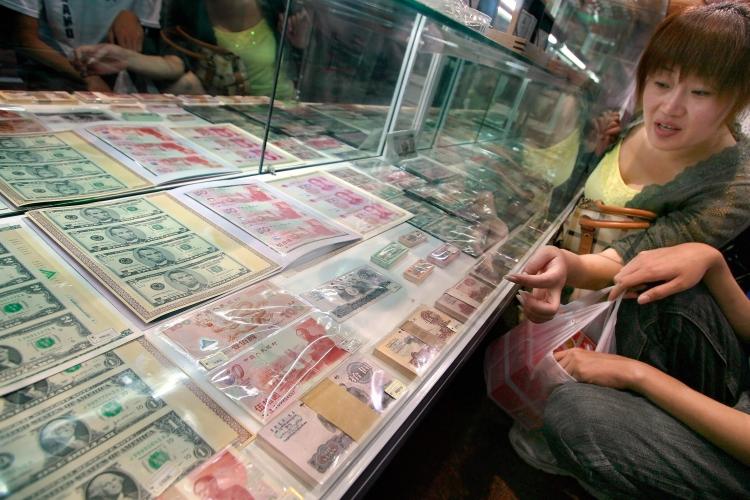In mid-July China reported that its foreign exchange reserves had exceeded US$1.8 trillion, which is more than any other country in the world has. It surpassed Japan in this category in 2006.
Ample foreign exchange reserves mean that the country is able to pay foreign countries for products or debts and reduce international investment payback risk. However, in this case, a significant portion of the sizable foreign exchange reserve does not actually belong to China.
As Chinese enterprises sell products overseas, the buyers typically pay in US dollars. Because the US dollar is not a currency in circulation in China, enterprises must change it into renminbi (RMB) so it can be circulated. The only place to make this exchange is at state-owned banks. This is how these US dollars, earned by Chinese companies, become a part of the foreign exchange reserve.
As exports and the trade surplus increase, more and more US dollars are flowing into China’s central bank, growing China’s foreign exchange reserves. China’s central bank then issues more RMB in exchange.
Economists in China studying world finance pointed out that more than 30 percent of China’s current foreign exchange reserves were built up after 2003. Of this 30 percent, more than 60 percent is from an inflow of capital, not trade surplus. Strictly speaking, that money does not belong to China. In the last two years the world economy has been turbulent, reducing China’s export volume, yet China’s foreign exchange reserves continue to increase. Between January and June of 2008 there was an increase of US$280 billion in foreign exchange reserves. It is likely that a large portion of this was from speculative investments, rather than trade and direct investments.
Speculative investments fluctuate drastically and carry economic risks. When the economy is heated, capital flows into the stock and real estate markets, raising prices irrationally. When the market mentality changes or the economy shows signs of weakening, speculative capital evaporates, triggering an outflow of local capital and exacerbating local economic struggles. It is commonly believed that there is at least US$500 billion worth of speculative capital in China, posing a daunting threat to the stability of the Chinese economy.
A large holding of foreign exchange reserves is not beneficial to the Chinese economy. While purchasing US dollars from enterprises, the central bank must issue more RMB. This directly increases the amount of local money in circulation, reduces the purchasing power of the RMB in China and causes inflation. To mitigate the problem, the central bank often issues short-term central-bank bill in the place of RMB to the banks turning in foreign currencies (which is called offset in China, there are also other offset method such as increase bank reserve ratio). This brings the risk and cost of the offset into the Chinese financial system.
The huge financial reserves also have an opportunity cost (the profit made from investing that money for the period the bank holds it in reserve). Such reserves could have been used for imports, increasing resources, providing employment opportunities, or directly paid to citizens. Furthermore, the devaluation of the US dollar has led to a loss in China’s foreign exchange reserves in the world market. This has generated some criticism from the people in China.
Although Chinese authorities have tried to curb the inflow of speculative capital, the reports of widespread accounting fraud in many Chinese enterprises leads one to believe that no substantial change can be expected in the near future.



Friends Read Free